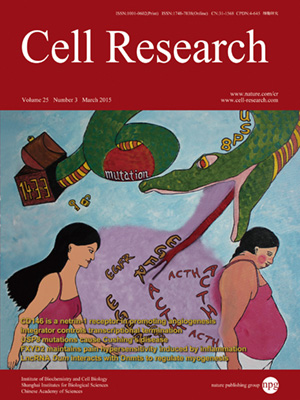
Volume 25, No 3, Mar 2015
ISSN: 1001-0602
EISSN: 1748-7838 2018
impact factor 17.848*
(Clarivate Analytics, 2019)
Volume 25 Issue 3, March 2015: 386-389
LETTERS TO THE EDITOR
Base-resolution maps of 5-formylcytosine and 5-carboxylcytosine reveal genome-wide DNA demethylation dynamics
Xingyu Lu1,*, Dali Han1,*, Zhao Boxuan Simen1,*, Chun-Xiao Song1, Li-Sheng Zhang1, Louis C Doré1 and Chuan He1
1Department of Chemistry and Institute for Biophysical Dynamics, Howard Hughes Medical Institute, The University of Chicago, 929 E 57th Street, Chicago, IL 60637, USA
Correspondence: Chuan He,(chuanhe@uchicago.edu)
The TET family of dioxygenases can oxidize 5-methylcytosine (5mC) to 5-hydroxymethylcytosine (5hmC), 5-formylcytosine (5fC), and 5-carboxylcytosine (5caC) in mammalian genomic DNA via a stepwise manner1,2,3,4,5. 5fC and 5caC are selectively recognized and excised by mammalian thymine DNA glycosylase (TDG), and restored to normal cytosine through base excision repair3,6,7,8,9. Once converted to 5fC and 5caC, the modified cytosine base is presumably committed to demethylation through the TDG-dependent pathway or other potential mechanisms. Thus 5fC and 5caC specifically mark active demethylation in the mammalian genome.
10.1038/cr.2015.5
FULL TEXT | PDF
Browse 2361


